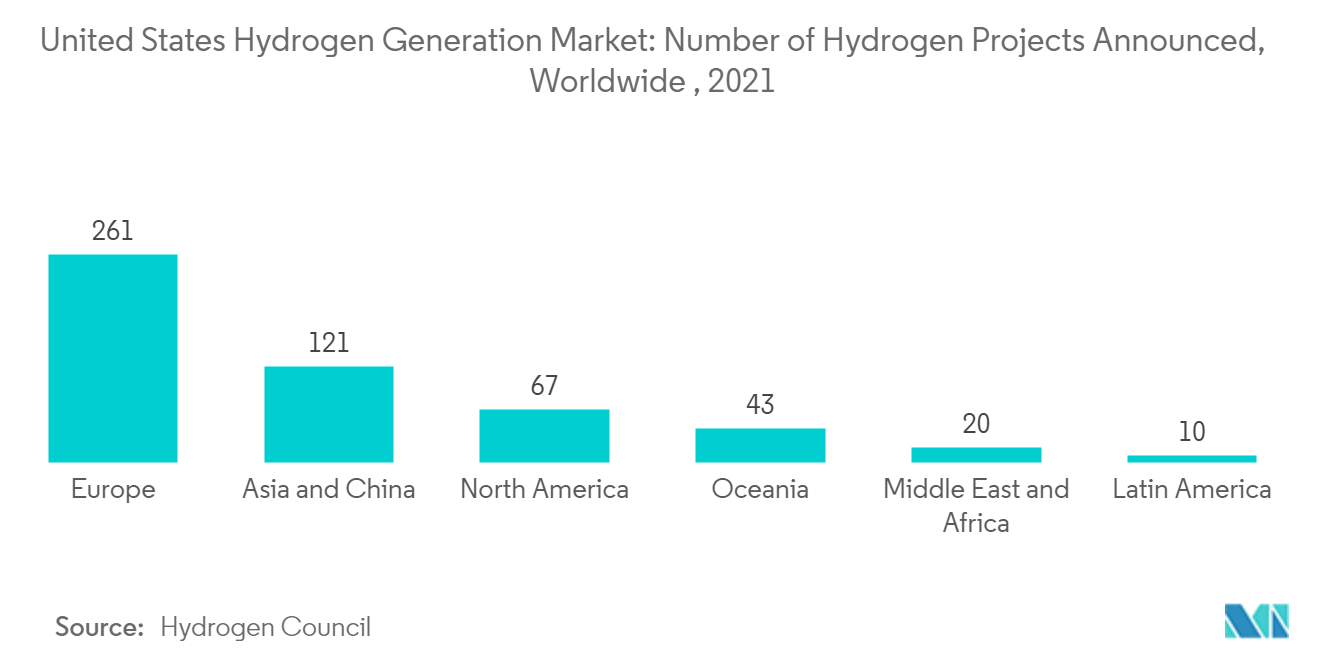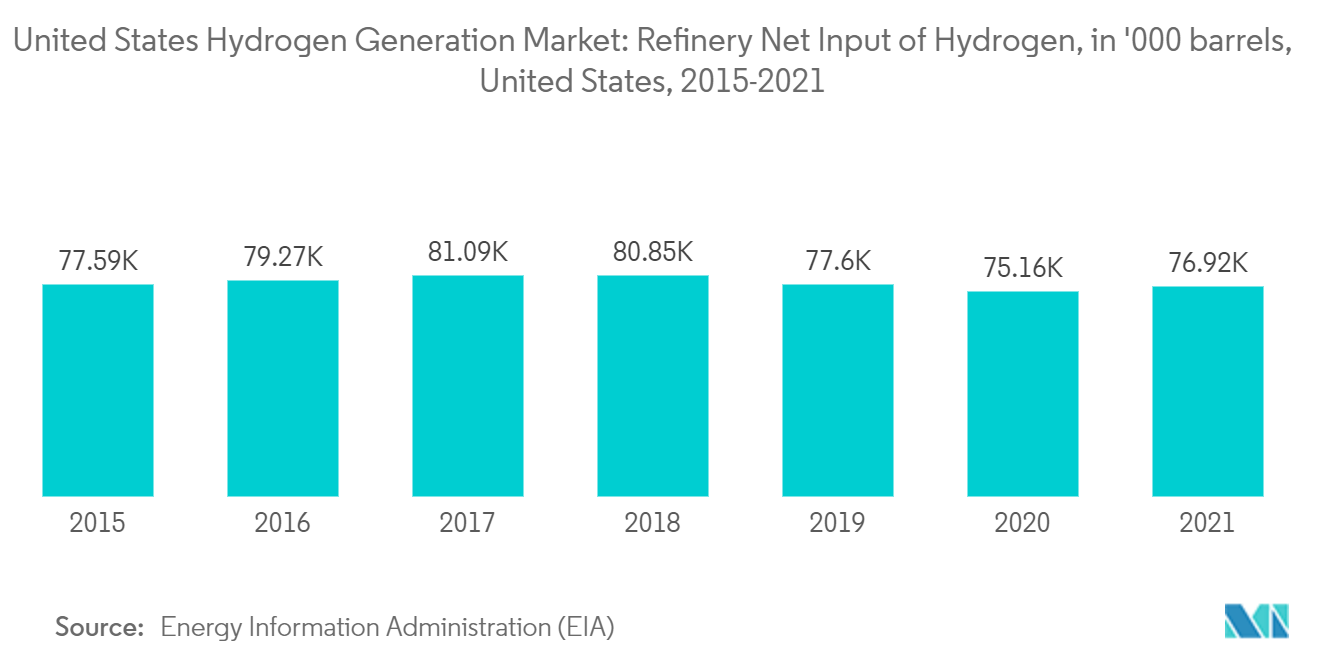Market Trends of United States Hydrogen Generation Industry
This section covers the major market trends shaping the US Hydrogen Generation Market according to our research experts:
Grey to Dominate the Market
- Grey hydrogen is the most common form of hydrogen production, and it uses natural gas (via stream methane reformation) or coal (via coal gasification) to produce hydrogen. The process of hydrogen production is carbon-intensive, as significant carbon emissions are released into the atmosphere during these production processes.
- In 2021, Globally, 522 hydrogen projects were announced to be developed between 2021 and 2030, of which 43 are giga-scale green hydrogen projects. North American region has significant hydrogen activity with about 67 hydrogen projects. North American countries have been invested in finding non-carbon-intensive alternatives for industrial and transportation usage to strengthen the local value chain. This is expected to witness significant opportunities for the United States hydrogen generation market.
- According to Global CCS Institute, nearly 120 Mt of hydrogen is produced annually, of which approximately 98% of current hydrogen production is from the reformation of methane or the gasification of coal or similar materials of fossil-fuel origin (e.g., petcoke or asphaltene).
- Due to global efforts to reduce emissions, mainly from heavy industries such as petrochemicals, iron, steel, and power generation, are being made to minimize grey hydrogen production and usage. Due to this, investments in the segment are falling rapidly, and the segment is expected to witness minimal capacity growth during the forecast period.
- However, despite falling costs of blue and green hydrogen technologies, grey hydrogen production is expected to remain cost competitive with both types during the forecast period. Due to this, grey hydrogen is expected to hold a significant share of the market, though its market share is expected to fall significantly during the forecast period.
- Hence, owing to the above points, the grey hydrogen segment is likely to witness significant growth in the United States hydrogen generation market during the forecast period.

Steam Methane Reforming (SMR) to Witness Significant Growth
- SMR (Steam Methane Reforming) is a chemical process used to produce hydrogen on a large scale in the gas manufacturing industry. In this process, two chemical reactions convert water and methane (usually natural gas) into pure hydrogen and carbon dioxide. Further purification of the hydrogen gas is accomplished according to the customer's specifications. SMR is the most common and cost-effective way to produce hydrogen gas, which is used for a wide variety of industrial processes, such as the production of electricity and refining oil.
- The United States Energy Information Administration (EIA) reported the net hydrogen input in oil refining as 76,918 thousand barrels, recording a growth of 2.3% compared to 2020 levels. Hydrogen is also used extensively in generating ammonia and methanol and providing industrial heat for chemicals and industrial applications.
- SMR plants use approximately 67 percent of the total natural gas for reforming, while 33 percent provides heat. One mole of natural gas feed provides four moles of hydrogen.
- In April 2022, Wood plc announced its new steam methane reforming (SMR) technology, which is expected to achieve 95% CO2 emissions reduction compared to a traditional hydrogen production plant. This new technology is designed to counter inefficiencies in energy, heat production, and industrial processes, which collectively account for more than half of all global greenhouse gas emissions.
- In June 2022, The Department of Energy (DOE) released a Notice of Intent (NOI) to fund the USD 8 billion program for the development of regional clean hydrogen hubs (H2Hubs) across the country under the Bipartisan Infrastructure Law. To accelerate the use of hydrogen as a pure energy carrier, H2Hubs are expected to create networks of hydrogen producers, consumers, and local connectivity infrastructure. The United States produces approximately 10 million metric tons of hydrogen yearly, compared to about 90 million tons worldwide. Most hydrogen produced in the United States comes from natural gas through steam methane reforming and electrolysis technology.
- Hence, increasing advancements in cleaner technology and various government initiatives for producing hydrogen through efficient infrastructures are driving the demand for steam methane reforming technology in the United States hydrogen generation market.


